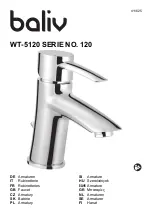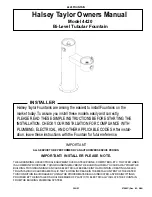
13
Place the Boundary Flags
Step 8 During training the Boundary Flags are visual
reminders for your dog of where the Warning Zone is
located.
1. Hold the Receiver Collar at your dog
’s neck
height.
2. Walk towards the Warning Zone until the
Receiver Collar beeps (
8A
).
3. Place a Boundary Flag in the ground (
8B
).
4. Walk back into the Dog Area until the beeping stops.
5.
Repeat this process around the Warning Zone until it is marked with Boundary Flags every 10
feet.
Note: If you cannot hear the beep, see the Test Light Instructions in Step 6.
Step 9
Fit the Receiver Collar. The proper fit and placement of your Receiver Collar is
important for effective training. The Contact Points must have direct
contact with your dog
’s skin on the underside of its neck.
To assure a proper fit, please follow these steps:
1. Make sure that the battery is not installed in the Receiver Collar.
2. Start with your dog standing comfortably (
9A
).
3. Centre the Contact Points underneath your dog
’s neck, touching the skin.
If your dog has a long or thick coat, use the enclosed long
Contact Points to reach through the hair.
Note: It is sometimes necessary to trim the hair around the
Contact Points to make sure that contact is consistent.
4. Check the tightness of the Receiver Collar by inserting one
finger between the end of a Contact Point and your dog
’s neck.
The fit should be snug but not constricting (
9B
).
5. Allow your dog to wear the collar for several minutes then
recheck the fit. Check the fit again as your dog becomes more
comfortable with the Receiver Collar.
6. Trim the collar as follows: (
9C
):
a) Mark the desired length of the Receiver Collar with a pen.
Allow for growth if your dog is young or grows a thick winter
coat.
b) Remove the Receiver Collar from your dog and cut off the excess.
c) Before placing the Receiver Collar back onto your dog, seal the edge of the cut collar by
applying a flame along the flayed edge.
IMPORTANT:
For comfort, safety and effectiveness of product, please ensure the following:
During the first 2 weeks of training do not use the training device on your dog without your
direct supervision.
Check the fit to prevent excessive pressure by being able to insert one finger between the
Contact Point and your dog
’s skin.
Your dog must be carefully examined daily for any signs of a rash or sore.
If a rash or sore is observed, discontinue the use of the Receiver Collar for a few days.
If the condition persists beyond 48 hours, see your veterinarian.
Your dog’s neck and the Contact Points must be washed weekly with a wash cloth and mild
hand soap, then rinsed thoroughly.
NB:
A condition called Pressure Necrosis, which is a devitalisation of the skin due to excessive
and prolonged contact against the Contact Points, may occur if the steps above are not
followed.






































